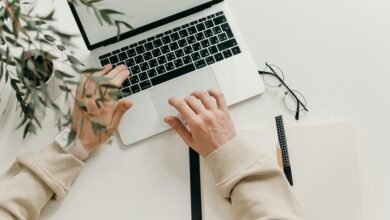Mutf_In: Cana_Robe_Mult_17zitzj

Mutf_In: Cana_Robe_Mult_17zitzj represents a significant advancement in the realm of digital storytelling. By integrating sophisticated algorithms with user-centered design, it enhances audience engagement through multisensory experiences. This platform not only redefines interaction but also empowers artists to leverage generative design techniques. As the landscape of digital art evolves, understanding the implications of these innovations becomes crucial for both creators and consumers alike. What transformations might lie ahead?
The Concept Behind Mutf_In: Cana_Robe_Mult_17zitzj
The concept behind Mutf_In: Cana_Robe_Mult_17zitzj revolves around the integration of advanced algorithms and user-centric design principles.
This innovative platform enhances digital storytelling by enabling creators to craft immersive experiences that engage users on multiple sensory levels.
Technological Innovations in Digital Art
Numerous technological innovations are reshaping the landscape of digital art, significantly enhancing the creative process and the final output.
Virtual reality expands the viewer’s immersive experience, allowing artists to create interactive environments.
Meanwhile, generative design utilizes algorithms to produce unique artworks, pushing the boundaries of creativity.
Together, these advancements liberate artists, fostering unprecedented exploration and expression within digital mediums.
The Impact of Machine Learning on Creative Processes
Machine learning has emerged as a transformative force in creative processes across various artistic domains.
By leveraging algorithmic creativity, artists can explore innovative avenues, enabling generative design to produce unique works that challenge traditional boundaries.
This intersection of technology and artistry fosters an environment where creators can collaborate with algorithms, thus expanding their creative horizons and enhancing the potential for groundbreaking artistic expression.
Future Trends in Interactive Art Experiences
How will emerging technologies shape the landscape of interactive art experiences in the coming years?
The rise of immersive installations, driven by augmented and virtual reality, will redefine audience interaction. Artists will harness these tools to create dynamic narratives, fostering deeper engagement.
As technology evolves, the potential for personalized experiences will empower audiences, transforming passive viewers into active participants in the artistic dialogue.
Conclusion
In conclusion, Mutf_In: Cana_Robe_Mult_17zitzj exemplifies the adage “Art imitates life,” as it harnesses advanced algorithms and user-centric design to redefine the boundaries of digital storytelling. By integrating technological innovations and machine learning, it enhances creative processes and fosters immersive experiences. As artists leverage these tools, the platform not only transforms individual expression but also shapes the future of interactive art, paving the way for deeper connections between creators and audiences in an increasingly digital world.




